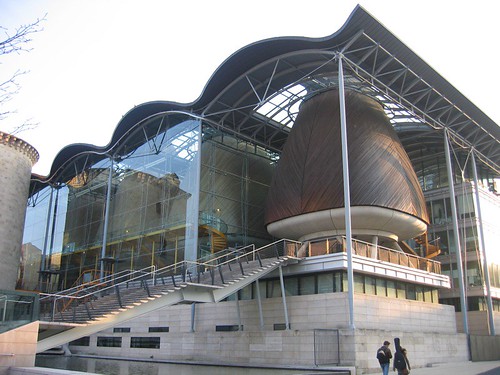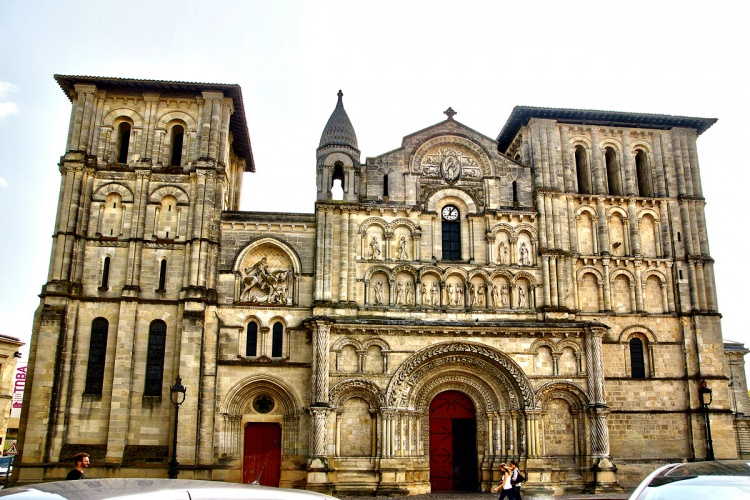“Ughhh…. Great. This is where I get to die. Can someone please kill me and spare me from this insufferable headache? It would be such sweet release.”
- Storage Closet. Ocean City, Maryland. Beach Week, 2003
“What happened? Weren’t they on a Dock? Why is there a pile of Cocaine?”
- Boyfriend’s Couch. West Lafayette, Indiana. That time I fell asleep watching Scarface, 2006
“Oh. My. God. What happened? The last thing I remember him saying was ‘Don’t leave me, I don’t know where I am’.”
- Pinned on the floor by a nightstand, Hilton Hotel, Boston, Massachusetts Vodka Drinking Contest, 2009
While initially disturbing, eventually everything becomes clear and you are alive with a spirit of determination and redemption (when necessary). Whether your next step is to find Advil, Google the plot of a movie or just out and out panic, they are all done with true grit.
Fortunately in this case of temporary amnesia, my first thought was “Where am..? Oh Right. Bordeaux.”
Bordeaux is a charming city as well as listed as a UNESCO World Heritage Site for "an outstanding urban and architectural ensemble" The area has been inhabited since the times of the Neanderthal and has archeological evidence from before the Roman conquest, it also lies in the rich and fertile ground of the Aquitaine, which was always of strategic importance for Europe (especially for the House of Plantagenet).
http://en.wikipedia.org/wiki/Eleanor_of_Aquitaine
Great Architectural sites in Bordeaux include.
Place de la Bourse, designed by Ange-Jacques Gabriel built in 1755 as La Place Royal for Louis XV
Place de la Bourse, designed by Ange-Jacques Gabriel built in 1755 as La Place Royal for Louis XV
Court of the First Instance, designed by Richard Rodgers, built in 1998

Eglise Sainte-Croix, designed by any number of people, as it is was built in the 7th century and has a long history

Le Grande Theatre, designed by Victor Louis, built in 1780

It is also a great example of Urban renewal reinvigorating the downtrodden. Most of the buildings in the city are coated with a limestone that while reacting very well to the sea-air, does not fair so well against the pollution. In the past 20 years they have been slowly cleaning the city to the point where the dirtier buildings look like the evil twins of the clean ones.
We learned all this from a guide named Guierrme and this was his story:
“Well I am studying to be a Sommelier. Then when I finish I will join my girlfriend in Brazil. I met her last year in Australia, we talk every night.”
My sister and I looked at each other and silently confirmed what we both knew. This unfortunate young man was going to have his heart ripped out and it was only a matter of time. We were all him (or some version of him) when we were young, for me it was young Blue-eyed blonde who I absolutely adored. He left for the wide west and I convinced myself with the stubborn determination of a last stand that it was going to work. It didn’t. It wasn’t supposed to.
However in Guierrme’s unassuming smile we could see the kind of love that is too powerful and too ignorant to be reasoned with. Like a hungry bear, like a shark with a toothache. There is no easy way for him to learn this lesson. We could tell him, but we would never be believed. What they have is special, unique, and timeless. Just like everyone else’s relationship. Then again, I could be wrong. That’s the best part of young love.
The rest of the day we toured around the Bordeaux region and I learned a very important lesson: I know NOTHING about wine. Example: “Yes, there is fruitiness, lightness and do I detect a hint of…grape?” Go ahead. Tell me I’m wrong.
After much aimless wandering we happened upon another UNESCO world heritage site, which are apparently as pervasive in this area of France as hobos are in my Baltimore neighborhood, you can literally trip over them. However, unlike the hobos around my house they don’t call you fat while simultaneously asking you for a dollar. At least none have yet.
We had arrived in St. Emilion, home to a large number of Grand Cru vines as well as the Monastery of St. Emilion. St Emilion was renown not only for his sin-absolving abilities but also for his libations. According to legend, St. Emilion carved this church from the living limestone face of the cliff under which the town now resides. There is something inherently religious about being underground. Maybe it’s because it is reminiscent of one’s own mortality and subsequently (if you believe in that sort of thing) immortality. Being under cover of darkness deep within the sturdy walls of someone’s true devotion can make you feel that your soul is an immortal and intangible being while the shell you inhabit perpetually dies all around it. It seems tragically unfair that we spend our whole lives collecting memories, wisdom, insight, intellect, being hoarders of our own experiences only to lose everything in death. In light of that, touching something that has been around for hundreds of years makes you feel as if maybe, your precious little moments stand a chance. That or maybe I had drunk too much wine.

With Bordeaux behind us, the final stop was underway.
On the Final Episode: Part VI Marseilles: “What are you looking at?”
On the Final Episode: Part VI Marseilles: “What are you looking at?”




